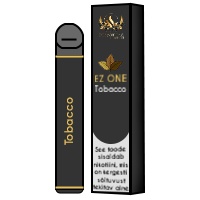Study: Vaping Instead of Smoking Reduces Children's Passive Nicotine Exposure

In recent years, children's exposure to passive smoking and nicotine has significantly decreased in many countries, thanks to the advent of new nicotine consumption methods. The primary factors contributing to this decline are the increased use of nicotine-containing e-cigarettes and stricter smoking restrictions.
Unlike traditional cigarettes, which produce smoke continuously during inhalation and burning, e-cigarettes generate vapor only when in use. This vapor is produced solely during inhalation, and vapers can inhale up to 100% of the nicotine in each puff. As a result, the indoor use of e-cigarettes is much more common than traditional cigarette smoking.
This shift has led to a notable reduction in children's exposure to nicotine and other harmful substances through passive means. However, it is crucial to continue research to fully understand the long-term health impacts of passive vaping on children compared to passive tobacco smoke.
om the US National Health and Nutrition Examination Survey (NHANES) for the years 2017-2020 provide valuable insights. Participants completed home interviews and provided blood samples at mobile examination centers. Most questionnaires for children were answered by their parents or guardians, with response rates of 59% for children aged 6-11 and 63% for children aged 1-5.
The survey assessed passive smoke exposure in children aged 3-11 using questionnaires that covered household tobacco product use and recent exposure in various settings. Children were categorized into two groups: those exposed only to passive cigarette smoke or e-cigarette vapor, and those exposed to both.
Findings revealed that children exposed only to passive e-cigarette vapor had 84% lower nicotine absorption compared to those exposed to passive tobacco smoke. Furthermore, children not exposed to passive smoke at all had 97% lower nicotine absorption. These differences remained consistent even after adjusting for demographic and socioeconomic factors.
Previous studies, including those using silicone wristbands, have also demonstrated significantly lower passive nicotine exposure from vaping compared to smoking. Nevertheless, we strongly recommend avoiding vaping near children to ensure their health and safety.

























